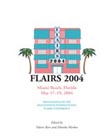Published:
May 2004
Proceedings:
Proceedings of the Seventeenth International Florida Artificial Intelligence Research Society Conference (FLAIRS 2004)
Volume
Issue:
Proceedings of the Seventeenth International Florida Artificial Intelligence Research Society Conference (FLAIRS 2004)
Track:
All Papers
Downloads:
Abstract:
A blind classification algorithm is presented that uses hyperdimensional geometric algorithms to locate a hypothesis, in the form of a convex polytope or hyper-sphere. The convex polytope geometric model provides a well-fitted class representation that does not require training with instances of opposing classes. Further, the classification algorithm creates models for as many training classes of data as are available resulting in a hybrid anomaly/signature-based classifier. A method for handling non-numeric data types is explained. Classification accuracy is enhanced through the introduction of a tolerance metric, ß, which compensates for intra-class disjunctions, statistical outliers, and input noise in the training data. The convex polytope classification algorithm is successfully tested with the voting database from the UCI Machine Learning Repository (Blake and Merz 1998), and compared to a simpler geometric model using hyper-spheres derived from the k-means clustering algorithm. Testing results show the convex polytope model’s tighter fit in the attribute space provides superior blind data classification.

FLAIRS
Proceedings of the Seventeenth International Florida Artificial Intelligence Research Society Conference (FLAIRS 2004)
ISBN 978-1-57735-201-3
Published by The AAAI Press, Menlo Park, California.
